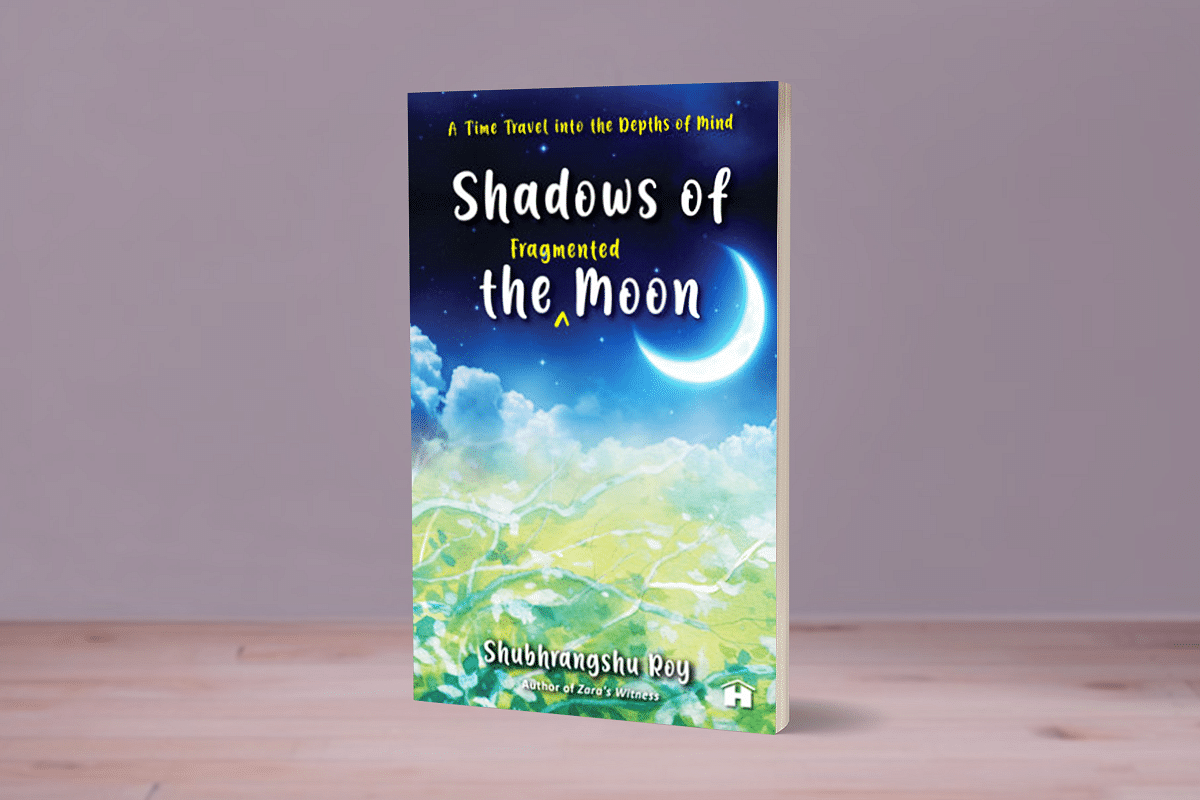Books
A Poetic Offering Inspired By The Yoga Vasistha And Ashtavakra Gita
- Shubhrangshu Roy has tapped into the enormous wisdom contained in the two lesser-known ancient texts, the Yoga Vasistha and Ashtavakra Gita, to write his short book of 108 poems.

The cover of the book.
Shadows of The Fragmented Moon: A Time Travel Into The Depths of Mind. Shubhrangshu Roy. Hay House. Price Rs 350. Page 212.
India’s ancient literary and poetic heritage, whether based on spiritual templates or philosophical musings, is simply too vast to be contained in any category. From the Vedas to the Upanishads, from the Ramayana to the Mahabharata, from the stories of the Puranas to the treatises of an Adi Shankara or a Ramanujacharya, and from the historical and literary outpourings of a Kalhana or Kalidasa to the more modern-day insights of a Swami Vivekananda or Sri Aurobindo, they represent free thinking of the kind rarely seen anywhere in the ancient or modern worlds.
Each one of these works represents an ocean in itself, leaving a treasure-trove of delights for today’s authors to sink their teeth into with relish. One such author is Shubhrangshu Roy, a US-based writer and a former Indian journalist, who has written a short book of 108 poems titled Shadows of The Fragmented Moon: A Time Travel Into The Depths of Mind.
Roy has tapped into the enormous wisdom contained in two lesser-known ancient texts, the Yoga Vasistha and Ashtavakra Gita, texts which are difficult to date, but are linked to the Ramayana. Prof Debashish Banerji, professor of Indian Philosophies and Cultures at the California Institute of Integral Studies, who has written the foreword to Roy’s book of 108 poems, calls the Yoga Vasistha and the Ashtavakra Gita as Advaitic in character, but unrelated to the ultimate exponent of the idea, Adi Shankara, who was born several centuries later.
While the inspiration for Roy was the Yoga Vasistha and Ashtavakra Gita, his poems are not limited by their vision or tenor, as they are a “transcreation”, which means they are freed from the need to try and be faithful to the ideas contained in the original texts. In doing so, Roy is doing what million of Indians have done with each text they have been handed down from the ages – use the inspiration, but tell the story in your own way. This is why we have 300 Ramayanas, hundreds of retellings of the Mahabharata, multiple interpretations of the Bhagavad Gita, et al. Today, we also have authors who have reimagined each character portrayed in the original texts to suit our time.
Roy’s poems have a simplicity and directness that are captivating, for they invite you to meditate and contemplate the meanings around the words, which is what our ancient seers and unknown authors of our epics and itihasas would have wanted.
The 108 poems, or explorations of the mind, consciousness and understandings, are grouped under 12 chapters with headings that tell their own story, starting with “Time”, going on to “The Mind” and culminating in “The End of Time” and “Freedom”. Roy mixes his eastern understanding of texts with western idiom, with some poems titled “RIP” and “Que Sera, Sera”.
For those who love contemplative poetry, Roy’s book is a feast. A simple poem that I liked runs like this:
BE!
I long to be free
When united in bondage
Where there is no liberation
In thinking aloud, alone
It’s time then, to free the mind
Of the delusion of you
Let what will be
Just Be! Just Be!
Roy’s readers will fall into two categories. Those who see this as a bit depressing, or those who see this as liberating. Which one are you?
Support Swarajya's 50 Ground Reports Project & Sponsor A Story
Every general election Swarajya does a 50 ground reports project.
Aimed only at serious readers and those who appreciate the nuances of political undercurrents, the project provides a sense of India's electoral landscape. As you know, these reports are produced after considerable investment of travel, time and effort on the ground.
This time too we've kicked off the project in style and have covered over 30 constituencies already. If you're someone who appreciates such work and have enjoyed our coverage please consider sponsoring a ground report for just Rs 2999 to Rs 19,999 - it goes a long way in helping us produce more quality reportage.
You can also back this project by becoming a subscriber for as little as Rs 999 - so do click on this links and choose a plan that suits you and back us.
Click below to contribute.
Latest